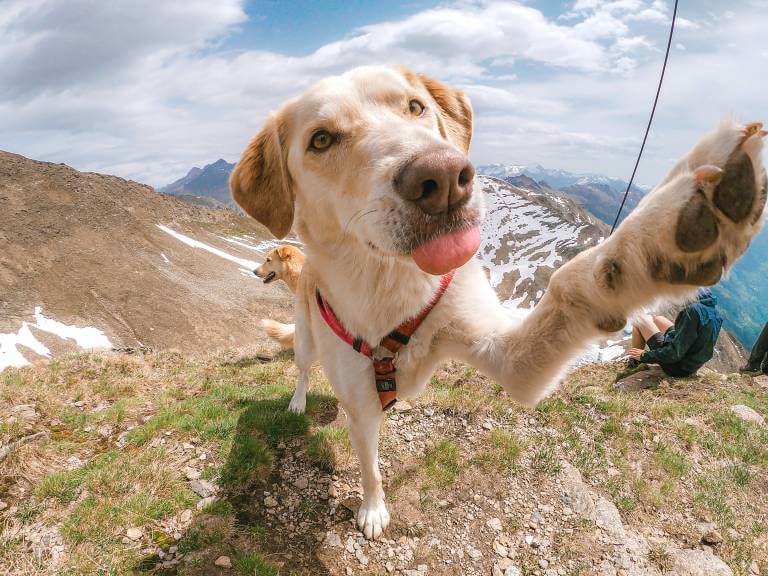Why Do Dogs Wag Their Tails?
Post Date:
December 10, 2024
(Date Last Modified: December 10, 2024)
When observing a dog wagging its tail, it’s easy to associate this joyful movement with happiness and excitement. However, tail wagging is a complex behavior that can express a variety of emotions and intentions. Gaining insight into why dogs wag their tails enriches our understanding of their behavior and strengthens our bond with them.
The Language of Tails
Dogs communicate through various means, and tail wagging is one of the most expressive. The tail acts as a crucial tool for body language, reflecting the dog’s emotional state. For dog owners, accurately interpreting these signals is vital for responding appropriately.
It’s a common misconception that a wagging tail always signifies a happy dog. While many dogs do wag their tails when excited or joyful, the context is crucial. Different types of tail movements can indicate a range of emotions, from anxiety and aggression to submission. A tail held high and wagging vigorously typically signifies confidence and happiness, whereas a low, slow wag may suggest fear or uncertainty.
Tail Position and Emotion
The position of the tail plays a significant role in understanding a dog’s feelings. A tail held high and wagging freely often signals playfulness and friendliness, while a tail tucked between the legs usually indicates fear or submission. The speed of the wag is also informative; a rapid wag shows enthusiasm, whereas a slow wag might indicate caution.
Research indicates that dogs may even wag their tails in different directions based on their emotional state. Wags directed to the right are often associated with happiness, while wags to the left may indicate negative feelings. This complexity underscores the importance of paying attention to a dog’s body language to better understand their emotions.
Breed Differences in Tail Expression
Tail wagging can also vary significantly between different breeds. Some breeds, like retrievers and spaniels, are known for their expressive tails, while others with shorter tails may communicate their emotions differently. Familiarity with these breed-specific tendencies can enhance the ability to interpret tail movements accurately.
Social Interactions and Tail Wagging
Interactions between dogs can influence how they wag their tails. During greetings, dogs often wag their tails as a form of invitation to play or socialize. However, the context is vital; a dog approaching another with a high, wagging tail may be friendly, while a dog with a stiff, elevated tail might be asserting dominance or displaying aggression.
Emotional Influence on Tail Movement
Dogs are highly social animals capable of sensing the emotions of their human companions. A dog may wag its tail when seeing its owner after a long day, reflecting excitement and affection. Conversely, if a dog detects tension or anxiety in a human, it may wag its tail more slowly, indicating a desire to comfort or connect.
Environmental Factors at Play
The environment also impacts how dogs express themselves through tail wagging. In unfamiliar situations, dogs may become cautious or anxious, affecting their tail movements. A dog that feels unsure may wag its tail slowly and low, while one that feels secure will likely wag it more freely.
The Role of Training and Socialization
Training and socialization significantly shape a dog’s behavior, including tail usage. Well-socialized dogs that have had positive interactions with others are more likely to express happiness through tail wagging. In contrast, dogs with negative experiences may exhibit more reserved tail movements, reflecting uncertainty.
Enhancing the Human-Canine Bond
Understanding the reasons behind tail wagging can deepen the bond between a dog and its owner. Observing a dog’s body language allows for more effective responses to their needs. For example, if a dog wags its tail enthusiastically while playing, it likely enjoys the activity and wants to engage further. Conversely, a slow wag during new encounters may indicate the need for reassurance.
Recognizing the significance of tail wagging can also help intervene in uncomfortable situations. If two dogs are meeting and one shows a stiff wag while the other displays submission, close monitoring is advisable to prevent misunderstandings.
Practical Implications of Tail Wagging
Beyond emotional expression, tail wagging has practical implications for dogs. The tail aids in balance, helping dogs maintain stability while running and playing, which is particularly important for agile breeds. In this way, tail wagging serves not only as a communication tool but also as a functional aspect of a dog’s anatomy.
The Joy of Tail Wagging
The sight of a wagging tail brings happiness and warmth, reminding us of the unique bond shared with our canine companions. In a world filled with stress, a simple wagging tail can evoke smiles and serve as a reminder of the joy found in companionship.
Being attentive to our dogs’ needs and emotions fosters this bond. Observing and understanding tail wagging enhances relationships, encouraging presence in the moment and appreciation for the subtle gestures that convey emotions.
Tail wagging can also signal the need for action. If a dog wags its tail while appearing tense, it may be a cue to provide comfort or remove them from a stressful situation. Grasping these signals builds trust and reinforces the idea that you are a safe haven.
Each dog is unique, and their tail movements can vary based on personality, breed, and individual experiences. Some dogs may wag vigorously, while others may adopt a more subtle approach. This diversity in expression makes observing dogs endlessly fascinating.
As our understanding of canine behavior evolves, the significance of tail wagging will continue to capture interest. Tail wagging remains a fundamental aspect of how dogs communicate, highlighting their complexity and emotional depth.
Recognizing why dogs wag their tails opens up new avenues of communication, allowing for deeper connections. The happiness conveyed through a wagging tail serves as a reminder of the joy dogs bring into our lives and the importance of nurturing this bond.






